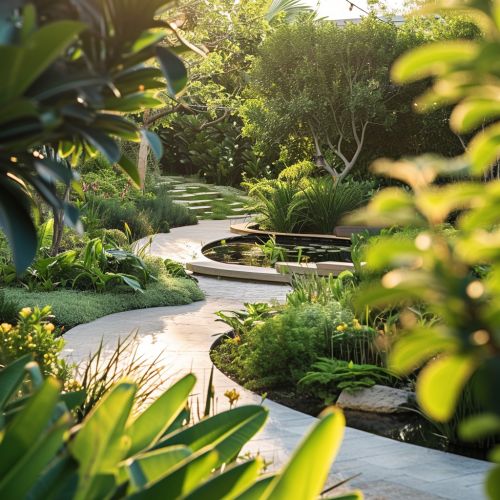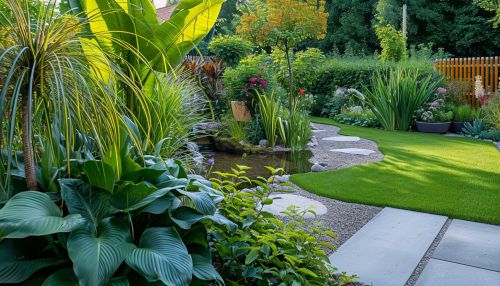Garden design
Overview
Garden design is the art and process of designing and creating plans for layout and planting of gardens and landscapes. It involves a complex interplay of horticultural knowledge, aesthetic sense, and understanding of the ecological framework. The practice of garden design can be done by the garden owner themselves, or by professionals of varying levels of experience and expertise.
History
The history of garden design spans across various cultures and millennia. In ancient Egypt, tomb paintings from as early as 1500 BC provide some of the earliest physical evidence of ornamental horticulture and landscape design; they depict lotus ponds surrounded by symmetrical rows of acacias and palms. Meanwhile, the Persian 'paradise' garden was known for its abundant planting and water features. The design principles of these gardens were influential in the development of the gardens of the Alhambra and Generalife in Spain, and the Taj Mahal in India.
Elements of Garden Design
Garden design encompasses a number of universal elements, regardless of the style of the garden. These elements include:
Space
Space is one of the essential elements in garden design. It is the area that the garden designer has to work with. The size, shape, and topography of the space can greatly influence the design.
Form
Form refers to the shapes of the plants and structures in the garden. It is important to consider the form of the plants and structures as they can greatly affect the overall aesthetic of the garden.
Texture
Texture in garden design refers to the surface quality of an object. This can be perceived visually or through touch. Different textures can create various effects in the garden.
Color
Color is a powerful design tool that can create mood, define space, and unify a design. It can be introduced through plants, hardscape, and garden structures.
Line
Line is used to direct physical movement and visual navigation in the garden. Lines can be created through the arrangement of plants and hardscape.
Garden Styles
There are numerous styles of gardens that can be designed, each with their own unique characteristics and requirements. Some of the most popular styles include:
Formal Gardens
Formal gardens are characterized by symmetry and order. They often feature geometric shapes, straight lines, and a clear axis.
Informal Gardens
Informal gardens are typically designed to look natural and unstructured. They often feature curved lines, asymmetrical design, and a variety of plant materials.
Japanese Gardens
Japanese gardens are designed to create a tranquil and peaceful atmosphere. They often feature elements such as water, rocks, bridges, and lanterns.
Cottage Gardens
Cottage gardens are characterized by their casual, relaxed, and colorful design. They often feature a mix of ornamental and edible plants.
Design Process
The design process typically involves several stages, including site analysis, conceptual design, design development, and implementation.
Site Analysis
Site analysis involves understanding the existing conditions and potentials of the site. It includes analyzing the soil, climate, topography, and existing vegetation and structures.
Conceptual Design
Conceptual design is the initial response to the site analysis. It involves generating ideas and exploring different design options.
Design Development
Design development involves refining the conceptual design and working out the details of the design. This includes selecting specific plants and materials, and detailing the construction methods.
Implementation
Implementation is the actual construction of the garden. It involves site preparation, planting, and building the garden structures.
See Also
Categories


